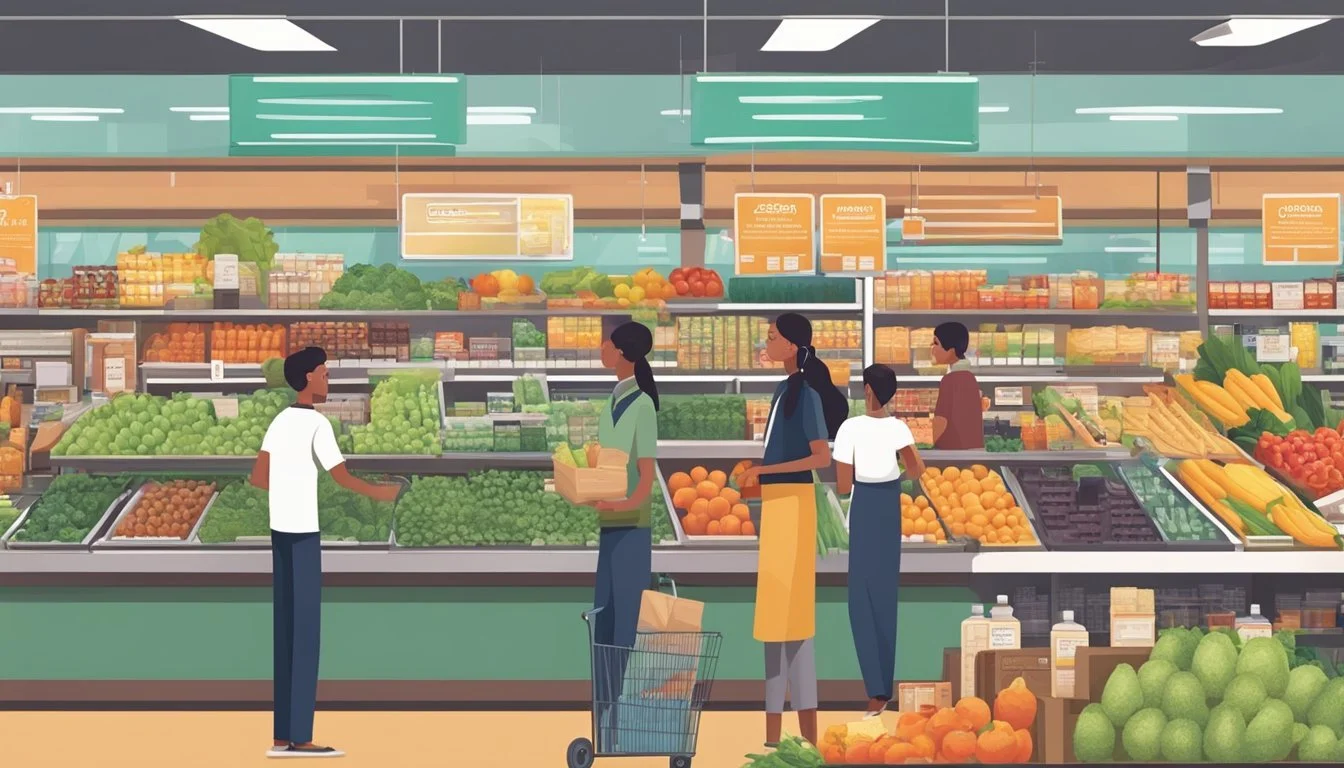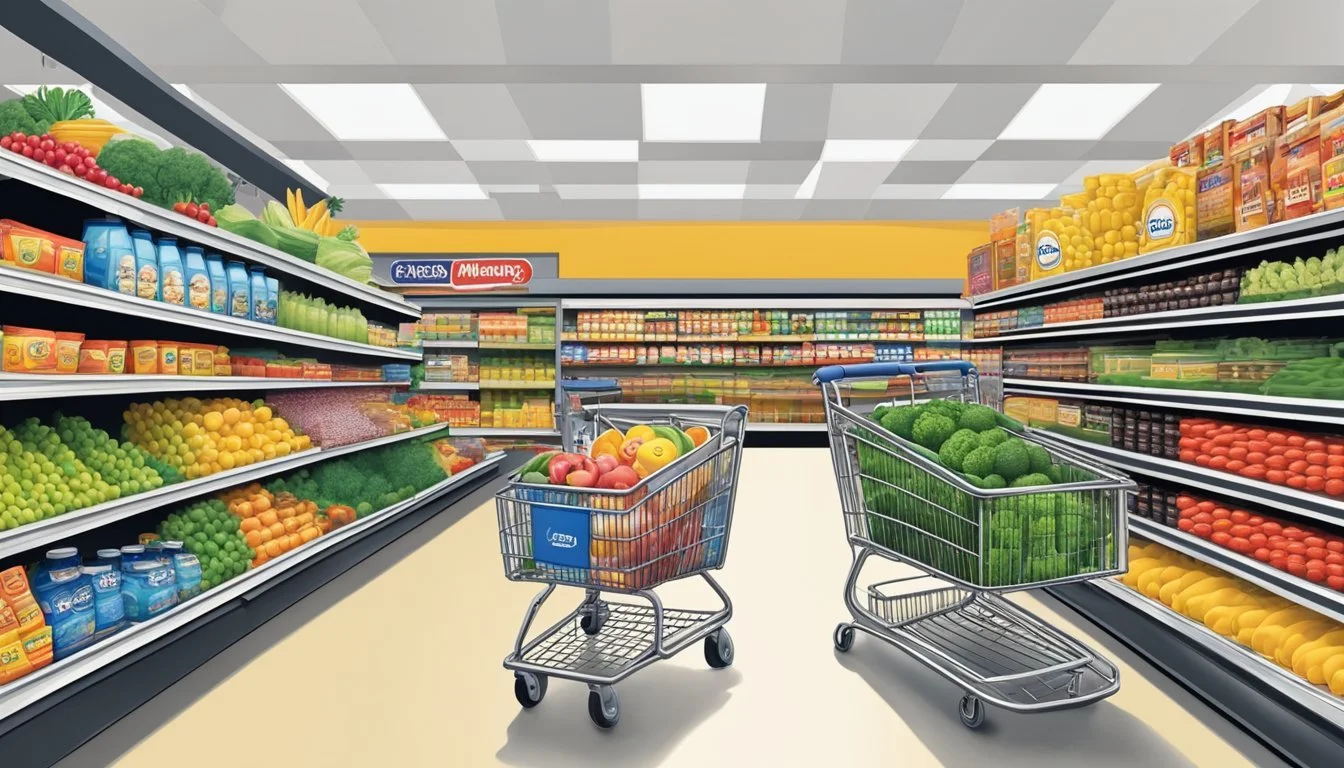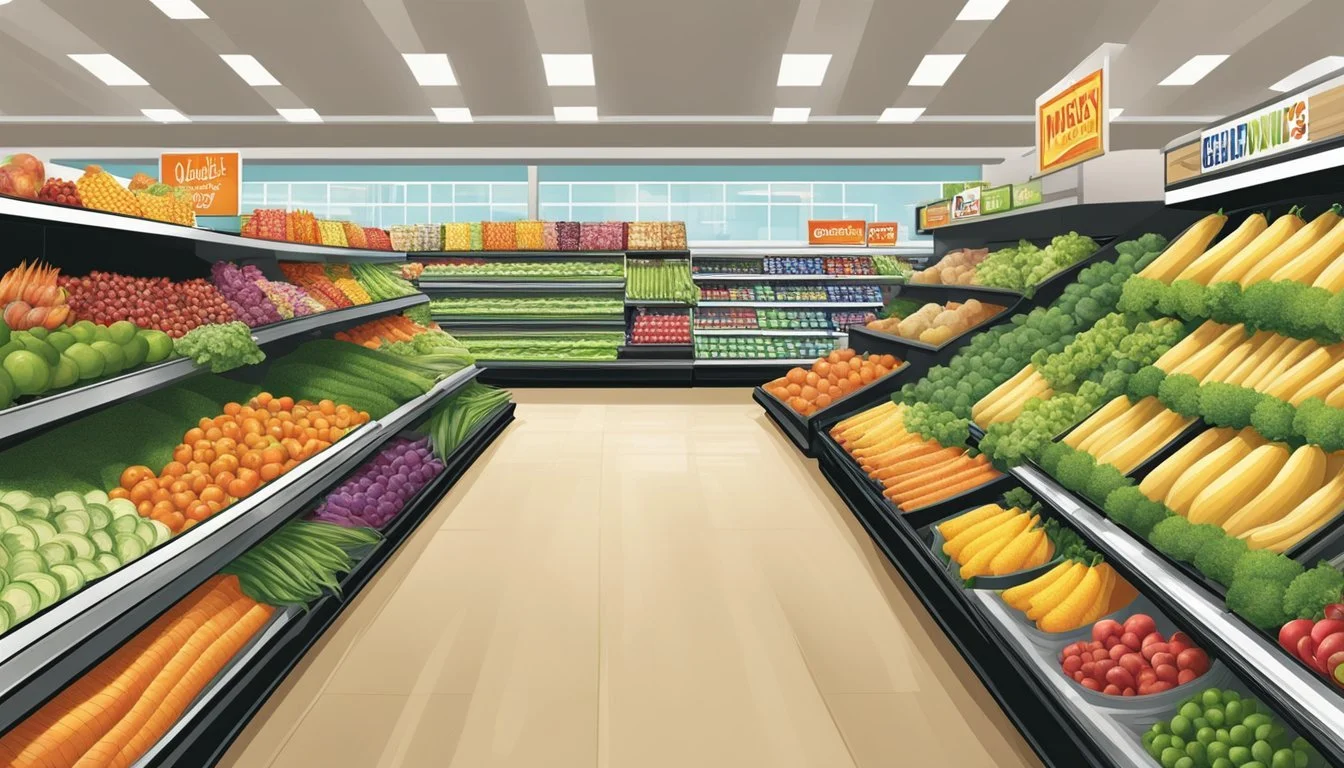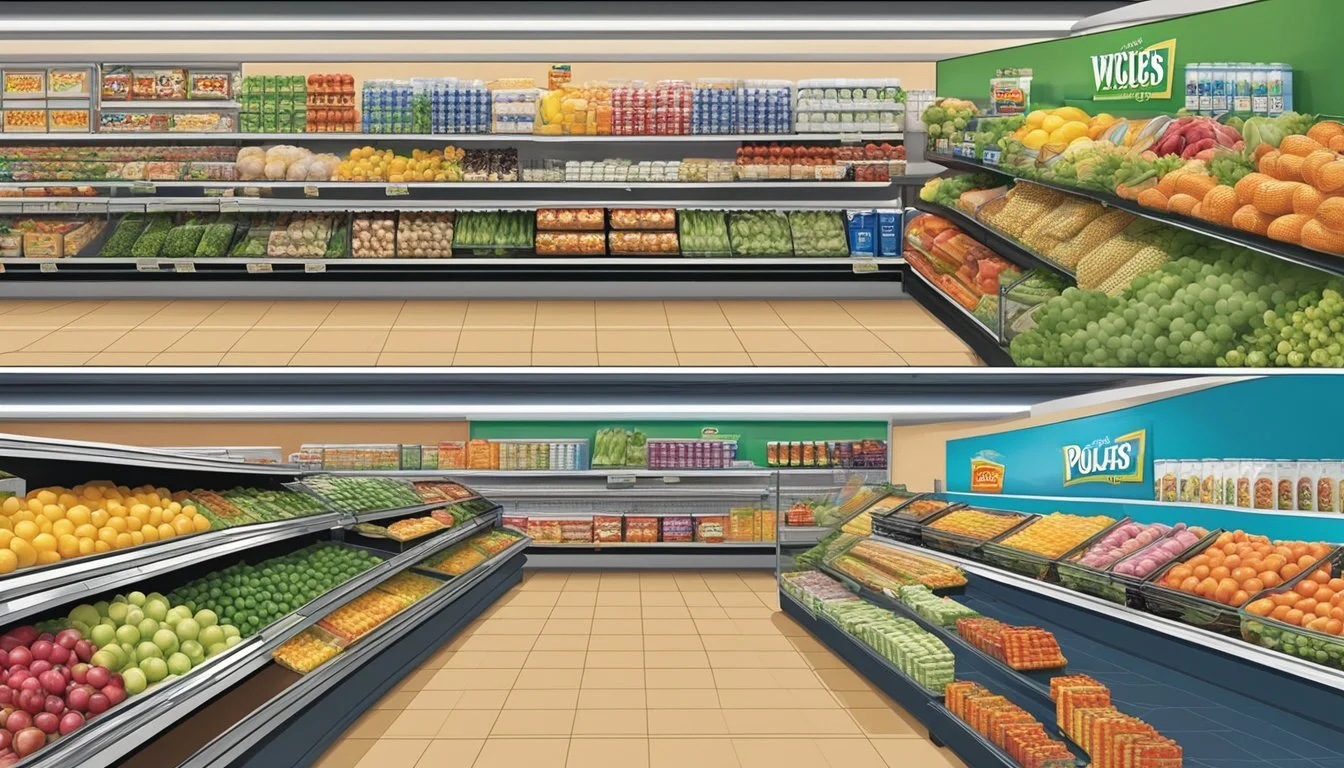Lucky Supermarkets vs Piggly Wiggly
A Comprehensive Comparison of Prices, Selection, and Service
When it comes to choosing a grocery store, consumers often weigh factors like product selection, pricing, and overall shopping experience. Lucky Supermarkets and Piggly Wiggly are two distinct chains that cater to different regions and demographics in the United States.
Lucky Supermarkets, primarily found in Northern California, offers a modern shopping experience with a focus on fresh produce and international foods. Piggly Wiggly, on the other hand, has a strong presence in the Southern and Midwestern states, known for its community-oriented approach and local product offerings. While both stores have their strengths, Piggly Wiggly edges out Lucky Supermarkets in terms of overall customer satisfaction, with a rating of 4.075 compared to lower scores for many national chains.
The choice between Lucky Supermarkets and Piggly Wiggly ultimately depends on individual preferences and location. Lucky Supermarkets may appeal to those seeking a wider variety of ethnic foods, while Piggly Wiggly's charm lies in its regional specialties and hometown feel.
History of the Brands
Piggly Wiggly and Lucky Supermarkets have unique origin stories that shaped the modern grocery landscape. Both chains introduced innovative concepts that transformed food shopping experiences for consumers across the United States.
The Founding of Piggly Wiggly
Clarence Saunders founded Piggly Wiggly in Memphis, Tennessee in 1916. The chain revolutionized grocery shopping by introducing the self-service concept. Customers could now browse aisles and select their own items, a stark contrast to the clerk-assisted model of the time.
Saunders patented his innovative store layout and franchised the Piggly Wiggly name. The chain rapidly expanded across the country, with over 1,000 stores by 1923.
Piggly Wiggly pioneered many features now standard in supermarkets:
Price-marked items
Checkout stands
Shopping baskets
Saunders later developed Keedoozle, an automated store concept, though it didn't achieve the same success as Piggly Wiggly.
The Evolution of Lucky Supermarkets
Lucky Stores began as Peninsula Stores in 1931 in San Leandro, California. The company adopted the Lucky name in 1935 and expanded throughout Northern California.
Lucky introduced several innovations:
In-store bakeries
Large produce sections
Wide aisles for shopping carts
The chain grew steadily, becoming a major player in the Western United States grocery market. In 1998, Albertsons acquired Lucky, but the brand was revived in 2006 under new ownership.
Lucky adapted to changing consumer preferences, emphasizing fresh produce and competitive pricing. The chain continues to operate stores primarily in Northern California.
Store Locations and Presence
Piggly Wiggly and Lucky Supermarkets have distinct regional footprints in the United States. Their store locations reflect different historical roots and expansion strategies.
Piggly Wiggly's Southern Roots
Piggly Wiggly's history is deeply intertwined with the American South. The chain originated in Memphis, Tennessee in 1916, establishing itself as a pioneering self-service grocery store. Today, Piggly Wiggly operates over 500 stores, primarily concentrated in the Southern and Midwestern United States.
The brand maintains a strong presence in states like Alabama, Georgia, and the Carolinas. Piggly Wiggly stores are often found in small towns and rural areas, serving as community fixtures.
Lucky Supermarkets' Regional Stores
Lucky Supermarkets has a more focused regional presence compared to Piggly Wiggly. The chain primarily operates in Northern California, with a concentration of stores in the San Francisco Bay Area and surrounding regions.
Lucky Supermarkets' footprint includes cities like San Francisco, Oakland, and San Jose. The brand caters to urban and suburban communities, offering a mix of conventional and specialty grocery items.
Unlike Piggly Wiggly's expansive Southern network, Lucky Supermarkets maintains a tighter geographical focus. This regional strategy allows the chain to tailor its offerings to local preferences and compete effectively in a competitive California market.
Product Selection and Quality
Lucky Supermarkets and Piggly Wiggly offer diverse product ranges to cater to different customer needs. Both stores stock essential groceries, but their selections vary in terms of variety, quality, and specialty items.
Fresh Produce Offerings
Lucky Supermarkets provides a wide array of fresh fruits and vegetables. Their produce section features seasonal items and locally-sourced options when available.
Piggly Wiggly also maintains a selection of fresh produce. While their variety may be more limited compared to Lucky Supermarkets, they focus on stocking popular staples and regional favorites.
Both stores implement quality control measures to ensure freshness. Lucky Supermarkets often displays produce in visually appealing arrangements, while Piggly Wiggly emphasizes value-oriented pricing.
Meat and Deli Selections
Lucky Supermarkets typically offers an extensive meat department with various cuts of beef, pork, poultry, and seafood. Their deli counters feature a range of sliced meats, cheeses, and prepared salads.
Piggly Wiggly maintains a commitment to providing high-quality meat products. Their selection may be more focused on popular cuts and local preferences.
Both stores offer fresh and frozen options. Lucky Supermarkets might have a broader selection of specialty meats, while Piggly Wiggly often emphasizes competitive pricing on staple items.
Store-Prepared Foods and Bakery
Lucky Supermarkets generally has a larger selection of store-prepared foods. This includes hot meals, salad bars, and grab-and-go options for busy shoppers.
Piggly Wiggly's prepared food offerings may be more limited but often include regional favorites and comfort foods.
In the bakery department, Lucky Supermarkets typically provides a wider variety of freshly baked bread, pastries, and custom cakes. Piggly Wiggly usually offers essential baked goods and may feature local specialties.
Organic and Specialty Items
Lucky Supermarkets tends to have a more extensive selection of organic products across various departments. They often stock specialty items catering to different dietary needs and preferences.
Piggly Wiggly's organic and specialty offerings may be more limited. However, they usually carry popular organic staples and some specialty products based on local demand.
Both stores adapt their product lines to meet changing consumer preferences. Lucky Supermarkets might have dedicated sections for health foods and international cuisines, while Piggly Wiggly focuses on providing essentials with some specialty options.
Pricing and Value
Lucky Supermarkets and Piggly Wiggly employ different pricing strategies to attract customers. Both chains offer competitive prices and unique value propositions through their store brands, discounts, and promotional offerings.
Everyday Prices and Discounts
Lucky Supermarkets focuses on providing consistent value through their everyday pricing model. They offer weekly specials and digital coupons to help customers save. Their loyalty program provides additional discounts and personalized offers.
Piggly Wiggly takes a different approach. They often feature loss leaders - deeply discounted items to draw customers in. Their stores frequently run "Buy One, Get One" promotions on popular products. Piggly Wiggly also distributes paper coupons in local newspapers and mailings.
Both chains adjust prices based on local competition and regional factors. This dynamic pricing ensures they remain competitive in their respective markets.
Competitive Pricing Comparison
A comparison of common grocery items reveals:
Staples: Lucky tends to have lower prices on milk, bread, and eggs.
Produce: Piggly Wiggly often beats Lucky on fresh fruit and vegetable prices.
Meat: Prices vary, with each chain offering better deals on different cuts.
Packaged goods: Lucky generally has a slight edge on national brands.
Overall, the price differences are relatively small. The best value often depends on current promotions and individual shopping habits.
Store Brands and Exclusive Products
Lucky Supermarkets offers its "Lucky You" brand across various product categories. These items typically provide savings of 10-30% compared to national brands. Lucky also carries some regional specialty products not found at Piggly Wiggly.
Piggly Wiggly's store brand is simply called "Piggly Wiggly." It covers a wide range of products, from canned goods to dairy. Their store brand aims to match national brand quality at lower prices.
Both chains use their store brands to offer value and differentiate themselves. However, Lucky's selection tends to be broader, particularly in organic and specialty categories.
Shopping Experience
Lucky Supermarkets and Piggly Wiggly offer distinct shopping experiences that cater to different customer preferences. Their approaches to store design, checkout processes, customer service, and technological integration shape how shoppers interact with each brand.
Store Layout and Design
Lucky Supermarkets typically feature a modern, open layout with wide aisles and clear signage. The stores are often brightly lit, with departments logically organized for easy navigation. Fresh produce sections are prominently displayed near the entrance, encouraging healthy choices.
Piggly Wiggly, as the pioneer of self-service grocery shopping, maintains a more traditional layout. The stores are usually smaller, fostering a neighborhood feel. Aisles may be narrower, but products are arranged in a familiar pattern that long-time customers appreciate.
Both chains prioritize cleanliness and product presentation. Lucky tends to have a more upscale appearance, while Piggly Wiggly aims for a homey, comfortable atmosphere.
Checkout Efficiency
Lucky Supermarkets often employ a mix of traditional cashier lanes and self-checkout options. During peak hours, they may open additional registers to reduce wait times. The chain invests in training staff to process transactions quickly and accurately.
Piggly Wiggly stores typically have fewer checkout lanes, reflecting their smaller store sizes. They focus on personal service, with cashiers often knowing regular customers by name. This approach can lead to a more relaxed checkout experience but may result in longer wait times during busy periods.
Both stores strive to balance efficiency with customer interaction. Lucky leans towards speed, while Piggly Wiggly emphasizes personalized service.
Guest Satisfaction and Service
Lucky Supermarkets train their staff to be knowledgeable about product locations and current promotions. They often have dedicated customer service desks for returns, special orders, and inquiries. The chain may offer additional services like in-store pharmacies or banking.
Piggly Wiggly prides itself on a more intimate shopping experience. Staff members are often long-time employees who develop strong relationships with shoppers. This familiarity can lead to personalized recommendations and a sense of community within the store.
Both chains value customer feedback and have systems in place to address concerns promptly. Lucky might use more formal satisfaction surveys, while Piggly Wiggly may rely on direct communication with shoppers.
Technology Integration and Convenience
Lucky Supermarkets generally embrace modern retail technologies. They may offer mobile apps for digital coupons, loyalty programs, and contactless payment options. Some locations feature electronic shelf labels for real-time price updates.
Piggly Wiggly stores vary in their technological adoption. While some have updated their systems to include digital loyalty programs and modern payment methods, others maintain a more traditional approach. This can appeal to customers who prefer simpler shopping experiences.
Both chains recognize the importance of online presence. Lucky often provides robust e-commerce options, including home delivery and curbside pickup. Piggly Wiggly's online services may be more limited but are increasingly available in select markets.
Store Policies and Services
Lucky Supermarkets and Piggly Wiggly offer distinct store policies and services to cater to their customers' needs. Both chains have implemented various programs and features to enhance the shopping experience and provide value to their patrons.
Return Policies and Customer Guarantees
Lucky Supermarkets provides a 30-day return policy for most items with a receipt. They offer full refunds or exchanges on unopened products. Perishable goods have a shorter return window of 7 days.
Piggly Wiggly's return policy varies by location due to its franchise model. Generally, stores accept returns within 14 days of purchase with a receipt. Some locations may offer store credit instead of cash refunds.
Both chains guarantee the quality of their products. Lucky Supermarkets has a "Fresh or Free" guarantee on produce. Piggly Wiggly stores often have similar local guarantees, though specifics may differ by franchise.
Loyalty Programs and Savings
Lucky Supermarkets operates the "Lucky You" rewards program. Members earn points on purchases, which can be redeemed for discounts on future shopping trips. The program also provides personalized digital coupons and exclusive member-only deals.
Piggly Wiggly's loyalty programs vary by region. Many stores offer a "Pig Card" that provides discounts on select items. Some locations feature fuel rewards programs, allowing customers to save on gas purchases at participating stations.
Both chains regularly offer weekly specials and seasonal promotions. Lucky Supermarkets tends to have more consistent chain-wide offers, while Piggly Wiggly deals may differ between franchises.
Online Shopping and Digital Coupons
Lucky Supermarkets has embraced e-commerce with a robust online shopping platform. Customers can order groceries for delivery or curbside pickup at most locations. Their mobile app allows for easy list-making and access to digital coupons.
Piggly Wiggly's online presence varies by franchise. Some locations offer basic online ordering and pickup services, while others may not have this option. Digital coupon availability also differs between stores.
Both chains provide some form of digital coupons, accessible through their websites or mobile apps. Lucky Supermarkets generally offers a more extensive and user-friendly digital coupon experience compared to the varied systems of Piggly Wiggly franchises.
Corporate Responsibility and Community Involvement
Lucky Supermarkets and Piggly Wiggly demonstrate their commitment to corporate responsibility and community engagement through various initiatives. Both chains recognize the importance of sustainability and supporting local communities.
Sustainability Initiatives
Lucky Supermarkets prioritizes environmental sustainability in its operations. The company has implemented energy-efficient lighting and refrigeration systems in its stores to reduce energy consumption.
Lucky also focuses on reducing food waste by partnering with local food banks to donate unsold, edible products. The chain encourages customers to use reusable bags and offers recycling programs for plastic bags and containers.
Piggly Wiggly has taken steps to improve its environmental impact as well. Many of its stores have adopted energy-saving practices, such as using LED lighting and optimizing refrigeration units.
The chain has also introduced a line of eco-friendly products, including biodegradable cleaning supplies and sustainably sourced paper goods.
Local Community Support
Lucky Supermarkets actively engages with local communities through various programs. The chain partners with schools to provide nutritional education and sponsors youth sports teams.
Lucky emphasizes locally-sourced produce, supporting regional farmers and reducing transportation-related emissions. The company also organizes food drives and fundraising events for local charities.
Piggly Wiggly stores, often independently owned, have strong ties to their communities. Many locations participate in local events and sponsor community organizations.
The chain prioritizes hiring local employees and often features products from nearby suppliers. Piggly Wiggly stores frequently host fundraisers for schools and local non-profit organizations, fostering a sense of community involvement.
Final Verdict
Lucky Supermarkets and Piggly Wiggly each offer unique shopping experiences. Lucky Supermarkets provides a modern, full-service grocery environment with a wide selection of products and fresh produce.
Piggly Wiggly, as America's first true self-service grocery store, brings historical significance and a more personalized shopping atmosphere. It often caters to regional preferences and local tastes.
Consumer Reports surveys indicate that customer satisfaction can vary significantly between grocery chains. Factors like product quality, pricing, and store cleanliness play crucial roles in shoppers' preferences.
Lucky Supermarkets may appeal to those seeking a comprehensive shopping experience with diverse offerings. Piggly Wiggly might attract customers who value tradition and a community-focused approach.
Ultimately, the choice between Lucky Supermarkets and Piggly Wiggly depends on individual priorities. Some shoppers prioritize product variety and modern amenities, while others prefer a familiar, localized shopping environment.
Both chains have their strengths, and the better option will vary based on personal preferences, location, and specific store performance. Consumers are encouraged to visit both stores and decide which aligns best with their needs and values.








